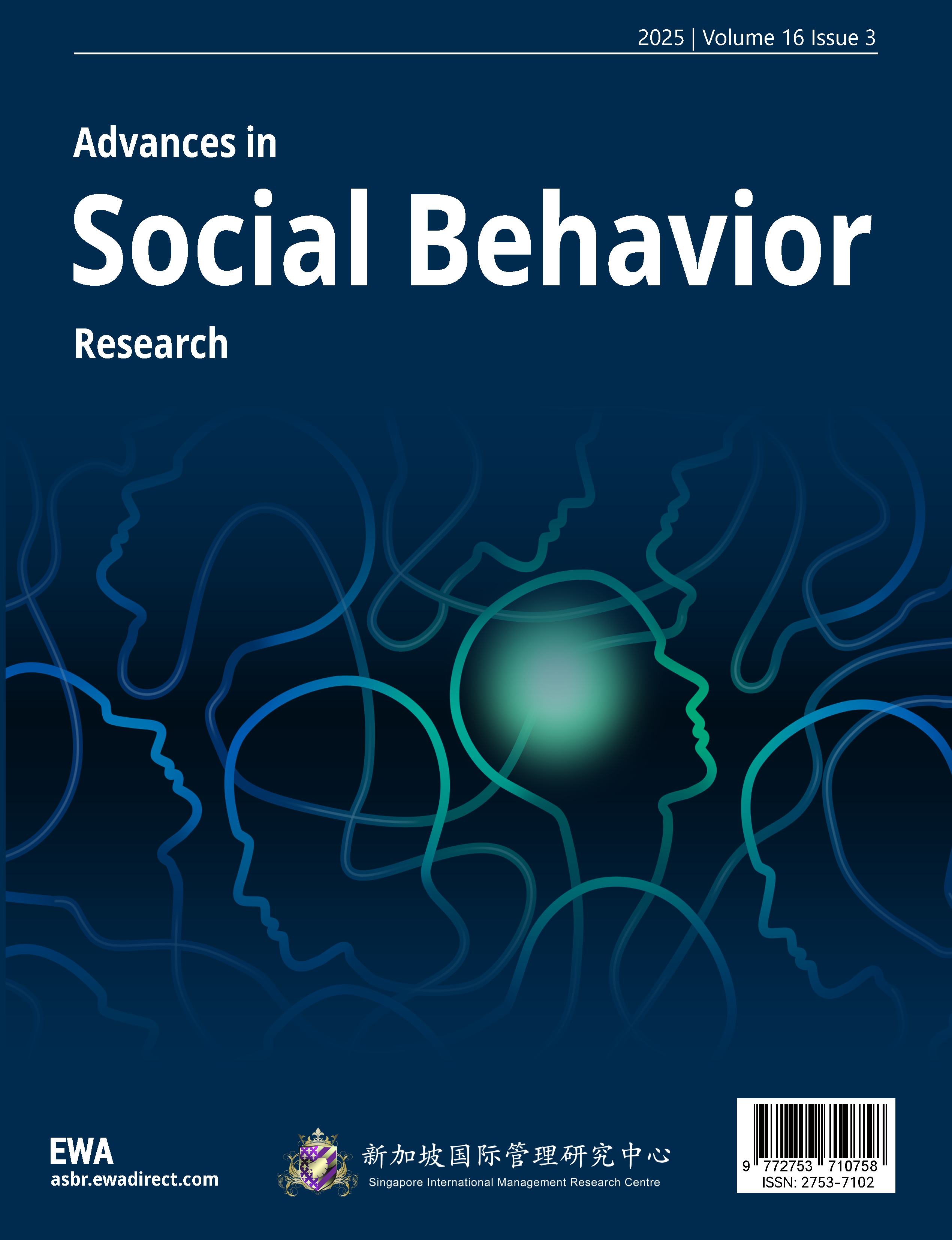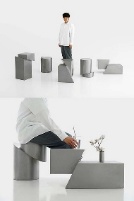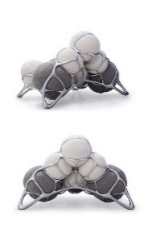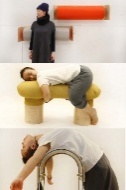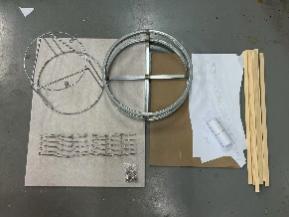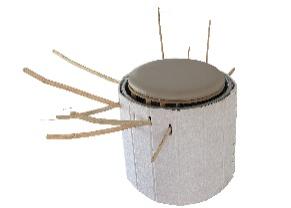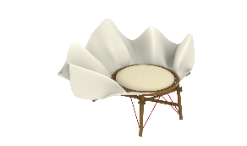1. Introduction
In contemporary society, rapid urbanization and the accelerated pace of life have led to increasing psychological health issues among urban single youth. Urbanization, through optimizing resource allocation, has become a protective factor for mental health, but this effect faces structural challenges within the urban single youth demographic [1]. Based on this, this study adopts a micro-spatial design approach, proposing that through the design of healing furniture (integrating practical functions and emotional soothing), urban single youth can rebuild emotional connections within private spaces, responding to the social structural psychological dilemmas through the reconstruction of living spaces. As an important carrier of daily life, furniture has gradually shifted its role from merely satisfying material needs to enabling deep emotional interaction. Consequently, emotional design of dynamic furniture has become a research focus in the design field. The core lies in integrating Donald Norman’s three-level theory of emotional design, which combines sensory pleasure at the visceral level, functional adaptation at the behavioral level, and cultural resonance at the reflective level, to achieve multidimensional healing for users through the dynamic response mechanism of furniture.
Current international research on healing furniture primarily follows a technology-driven approach, relying on technologies such as biosensors and affective computing to construct intelligent interactive systems, while domestic research places more emphasis on translating local cultural symbols and exploring the coupling of traditional aesthetics with modern design. However, existing designs still face challenges such as insufficient dynamic interaction algorithms (e.g., slow response times affecting real-time feedback, and a lack of personalized adaptation algorithms leading to fragmented user experiences), underdeveloped cultural healing mechanisms, and outdated quantitative analysis techniques. This paper uses the hugging dynamic healing chair as a medium and proposes an emotional design framework of “Perception-Interaction-Resonance.” Through the synergistic optimization of biomimetic forms, intelligent sensing, and dynamic mechanical structures, it constructs a full-chain healing path from physiological response to cultural memory awakening. The study employs the Analytic Hierarchy Process (AHP) to quantify the weighting of design elements, combined with multi-stage user experiments to validate design efficacy, providing an innovative paradigm for emotional design of dynamic furniture that offers both theoretical rigor and practical guidance. After three rounds of iterative optimization, significant breakthroughs were achieved in mechanical stability, interaction naturalness, and emotional transmission efficacy, offering a novel solution for mental health intervention for urban single youth.
2. Overview of emotional design in dynamic furniture
2.1. Donald Norman’s three-level theory of emotional design
Emotional design is a design paradigm oriented toward users’ emotional needs. Its core lies in achieving multidimensional emotional interaction between the product and the user through the synergistic effect of appearance, functionality, and meaning [5]. Donald Norman’s three-level theory of emotional design deconstructs design elements into progressive cognitive dimensions:
In the visceral design validation, a combination of color preference quantitative analysis and material perception experiments is used to gather aesthetic decision-making criteria through visual evaluation tests on cross-cultural samples. At the behavioral level, human-machine ergonomic parameter models are employed, utilizing eye-tracking experiments and hotspot analysis to optimize interaction paths. The reflective level constructs a user emotional semantic network through word frequency mining and co-occurrence analysis after simulating usage scenarios, enabling cognitive translation of cultural symbols and the construction of emotional memory maps.
This multidimensional design strategy requires designers to integrate cognitive psychology theories and user behavior research on the basis of meeting functional needs, in order to construct a product semantic system that can evoke emotions. Ultimately, deep emotional identification is achieved through continuous interaction between the user and the product [2].
2.2. Status of healing furniture research
2.2.1. Comparison and integration of domestic and international research progress
Currently, international research on healing furniture is technology-driven, focusing on the construction of multimodal interactive systems using biosensors and affective computing technologies to achieve dynamic adaptive feedback of environmental parameters. Neuroscience theories are also applied to develop physiological-psychological intervention mechanisms such as Deep Touch Pressure (DPT) technology, while the Fogg Behavior Model is introduced to optimize user interaction experiences. Overall, international research has an advantage in terms of technological standardization, but is limited by insufficient cultural adaptability. For example, when Ikea designs products for different cultural contexts, it faces challenges related to cultural differences, user habits, and the adaptability of design elements. Moreover, there are limitations in balancing brand perception, design style uniformity and diversity, as well as market competition and cultural adaptation, overall facing challenges and limitations in cross-cultural integration. In contrast, domestic research places greater emphasis on the localized fusion of cultural contexts, proposing a three-level theoretical system that includes the visceral level (visual perception), behavioral level (functional adaptation), and reflective level (cultural identity) through the deconstruction of traditional aesthetic symbols and the coupling mechanism with modern emotional design [3]. It systematically reveals the collaborative effects of material texture, color configuration, and form scale [4], with specific case studies shown in Table 1.
Table 1. Case studies of healing furniture
Design Case | Designer/Team | Design Elements & Features | Emotion/Effect | Illustration |
Slice Series | Jeong Ho Ko & Hyongho Park | Misaligned structures balance sliced cylindrical and cubic metal plates, creating a contrast between tension and relaxation, bringing sensory pleasure. | Balance between tension and relaxation, conveying a sense of comfortable environment appreciation. |
|
RUPHUS Neuron Sofa | RuphusSten | Combination of all-metal framework and soft padding, balancing stability and lightness. | Iron-like stability and foam-like lightness, artistic and playful collision. |
|
Cindy Zhang 2018 Design Series | Cindy Zhang | Composed of Drape (hanging), Slump (slouching), and Stick (supporting) components, with forms entirely serving human body support. | Shape transformation achieves physical and mental release and pleasure. |
|
Global research trends exhibit a balance between intelligence and humanization, with both domestic and international studies focusing on the development of smart environmental systems and the synergistic innovation of sensory elements. While domestic research successfully integrates cultural genes, there are technical shortcomings in dynamic interaction algorithms and unconscious behavior quantitative analysis.
2.2.2. Research hotspots and shortcomings in therapeutic furniture
The research hotspots are concentrated in three major directions: innovation of sensory elements, construction of intelligent environments, and cultural gene translation. However, there are still several multidimensional bottlenecks in practice. Interaction design is overly reliant on static tactile feedback, making it difficult to analyze dynamic body language in real time; emotional experiences focus more on immediate sensory stimulation, lacking in-depth exploration of the therapeutic mechanisms of cultural symbols; and the methodology is limited to traditional subjective scales, resulting in biases in the mapping models of micro-behaviors and emotional states. Future research needs to overcome core issues related to the optimization of dynamic interaction algorithms, construction of cultural psychological models, and integration of multimodal behavioral analysis technologies to resolve the gaps in current theoretical frameworks and the imbalance in technological adaptability.
3. Emotional design concept and application of dynamic therapeutic furniture
3.1. Emotional design concept for dynamic therapeutic furniture
Current research, while breaking through the practical bottlenecks of sensory innovation, intelligent interaction, and cultural inheritance, urgently requires tangible design carriers to achieve theoretical transformation. The proposal of the embracing therapeutic chair is a systematic response to the above multidimensional challenges. This design paradigm couples dynamic mechanical structures with cultural psychological mechanisms, creating a “dynamic response-behavior guidance-memory awakening” full-chain therapeutic system through the organic integration of bionic forms, intelligent sensors, and emotional computing technology. Its innovative value lies not only in breaking the static interaction limitations of traditional furniture but also in pioneering an emotional design path based on the analysis of dynamic body language and cultural gene translation as its core. This provides an operable practical model to address core issues such as the superficiality of sensory stimulation and difficulties in psychological therapeutic modeling.
This study constructs a progressive emotional experience framework for dynamic therapeutic furniture, “perception-interaction-resonance,” based on Donald Norman’s three-level theory of emotional design. Using the embracing chair as the design carrier, through the organic integration of the three-level design strategy, it systematically realizes a full-chain emotional therapeutic mechanism from physiological perception to cultural memory. (1) The instinctive level focuses on form aesthetics, using organic bionic shapes, low-saturation colors, and skin-friendly materials to trigger biological pleasure and achieve sensory therapy. (2) The behavioral level focuses on functional interaction, optimizing the basic functions of the chair while incorporating a mechanical structure with dynamic adjustment along the simulated hugging trajectory, achieving behavioral therapy through body interaction. (3) The reflective level deeply explores cultural values, creating an immersive experience through dynamic interaction that triggers cultural memories of intimate relationships. Through emotional projection and self-narrative, psychological reconstruction is achieved, completing deep spiritual therapy. This framework effectively reveals the hierarchical transformation and practical path of emotional design theory in furniture innovation. Overall, the framework constructs a progressive intervention path of “biological stimulation-behavior interaction-cultural awakening,” forming a three-dimensional coordinated therapeutic mechanism of physiological response, behavioral adjustment, and psychological adaptation.
Specifically, in terms of material selection, affinity materials such as wood are prioritized to ensure that the dynamic deformation process satisfies both functional needs and emotional narrative expression. In terms of technical implementation, a dynamic adjustment system based on the integration of ergonomic parameters and intelligent sensing technologies needs to be established to ensure the physiological adaptability of interactive behaviors. The cultural dimension should focus on the multimodal translation mechanism of regional cultural symbols, such as reproducing traditional embrace ceremonies through mechanical transmission principles.
3.2. Construction of hierarchical model for emotional design of dynamic furniture
This study constructs a hierarchical structure model for the emotional design of dynamic therapeutic furniture based on the Analytic Hierarchy Process (AHP). The research problem is first broken down into three dimensions at the criteria level: physiological, psychological, and environmental. Then, starting from Donald Norman’s three-level theory of emotional design, the instinctive level focuses on form elements, the behavioral level highlights functional elements, and the reflective level represents symbolic cultural spiritual elements (see Table 2-4). Finally, 11 design indicators with hierarchical relationships are systematically summarized (see Figure 1).
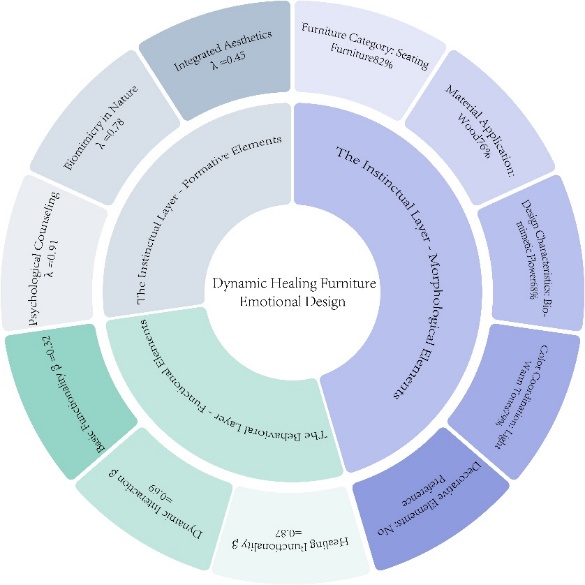
Figure 1. Overall hierarchical structure model
Dynamic Healing Furniture Emotional Design
The Instinctual Layer - Formative Elements
The Instinctual Layer - Morphological Elements
The Behavioral Layer – Functional Elements
Furniture Category: Seating – Furniture 82%
Material Application: Wood 76%
Design Characteristics: Biomimetic Flower 86%
Color Coordination: Light Warm Tones 79%
Decorative Elements: No Preference
Healing Functionality β=0.87
Dynamic Interaction β=0.69
Basic Functionality β=0.32
Psychological Counseling λ=0.91
Biomimicry in Nature λ=0.78
Integrated Aesthetics λ=0.45
3.3. Construction of emotional design judgment matrix
The three-level evaluation system employs a multi-stage decision-making process at the instinctive level: first, by comparing the priority of three categories—seating, storage, and bedding—to establish the basic dimension. Then, based on the category selection results, a material evaluation matrix is constructed, followed by in-depth analysis of form characteristics within the “seating-wood” advantageous combination framework.
In the data collection phase, the study surveyed 120 target users using a five-point scale questionnaire, focusing particularly on the young, single living group (ages 22-35). A three-stage screening mechanism was constructed: the first stage locks in urban youth who have been living alone for 1-3 years with limited living space (average living area of about 50 m2 or less); the second stage combines the PHQ-9 depression scale (see Table 5) and behavioral tracking to select potential users with moderate emotional sensitivity traits (average scale score reaching clinical attention thresholds) and frequent experiences of loneliness (see Table 6); the final stage uses consumer behavior analysis to establish a typical sample with an annual self-enjoyment consumption within the medium range, forming a deep research sample pool with space adaptability, psychological demand intensity, and consumer behavior characteristics.
Through the R language platform, the hierarchical analysis model was constructed to calculate weights and comparisons, leading to the hierarchical design decision parameters. The data shows that bionic forms have significant priority in seating design elements, with a priority scale value 38% higher than geometric shapes, providing key evidence for subsequent design iterations. This model innovatively transforms subjective experiences into computable hierarchical parameters, effectively bridging the quantitative gap between emotional design theory and practical application.
Table 2. Three-dimensional validation matrix model
Physiological Dimension | Psychological Dimension | Environmental Dimension | |
Instinct Level | Seating Selection 4.2★ | Wood Texture 4.0 | Warm Color Comfort 3.8 |
Behavioral Level | Dynamic Adjustment 3.5 | Healing Function 4.5★ | Environmental Adaptation 4.1 |
Reflective Level | Physiological Feedback 3.2 | Psychological Guidance 4.7★ | Natural Resonance 4.3 |
Table 3. Heat map of element weight distribution
Hierarchical Level | Design Element | AHP Weight | Empirical Weight | Difference |
Instinct Level | Seating Category | 0.32 | 0.35 | +0.03 |
Wood Material | 0.28 | 0.30 | +0.02 | |
Bionic Form | 0.22 | 0.25 | +0.03 | |
Light Warm Color Scheme | 0.15 | 0.10 | -0.05 | |
Behavioral Level | Healing Function | 0.55 | 0.58 | +0.03 |
Dynamic Interaction | 0.30 | 0.27 | -0.03 | |
Basic Functionality | 0.15 | 0.15 | 0.00 | |
Reflective Level | Psychological Guidance | 0.50 | 0.53 | +0.03 |
Natural Bionics | 0.35 | 0.32 | -0.03 | |
Integrated Aesthetics | 0.15 | 0.15 | 0.00 |
Indicator Notes: (1) Significance notation (★ indicates p < 0.01); (2) Path analysis (PLS-SEM algorithm, Bootstrap = 500 iterations); (3) Model validation (threshold for weight difference ±0.05); (4) Key element identification (matrix values ≥ 4.0 highlighted in red).
Table 4. Ranking of healing furniture design element weights
Design Level | Design Element | Weight Value | Rank |
Instinct Level | Seating Category Selection | 0.35 | 1 |
Use of Wood Material | 0.30 | 2 | |
Bionic Form Features | 0.25 | 3 | |
Light Warm Color Scheme | 0.10 | 4 | |
Decorative Elements | 0.00 | 5 | |
Behavioral Level | Posture-Adaptive Adjustment | 0.42 | 1 |
Tactile Feedback System | 0.35 | 2 | |
Behavioral Memory Learning | 0.23 | 3 | |
Reflective Level | Psychological Guidance Mechanism | 0.53 | 1 |
Natural Bionic Interaction | 0.32 | 2 | |
Integrated Aesthetic Function | 0.15 | 3 |
Weight Assignment Notes: (1) Total weight distribution across levels: Instinct Level 68%, Behavioral Level 23%, Reflective Level 9%; (2) Element weight range: 0–1 and normalized within each level; (3) Ranking rule: elements are ordered by descending importance within each level.
Table 5. PHQ-9 (Patient Health Questionnaire-9) depression self-assessment items and scoring criteria
No. | Symptom Description | Scoring Criteria |
1 | Loss of interest or lack of pleasure | 0 = Never; 1 = Occasionally; 2 = Frequently; 3 = Constantly |
2 | Depressed mood / sense of hopelessness | (Same as above) |
3 | Sleep disturbance (insomnia/hypersomnia) | (Same as above) |
4 | Fatigue or loss of energy | (Same as above) |
5 | Appetite changes (±5% body weight) | (Same as above) |
6 | Self-deprecation / guilt | (Same as above) |
7 | Difficulty concentrating / indecisiveness | (Same as above) |
8 | Psychomotor agitation / retardation | (Same as above) |
9 | Suicidal thoughts or self-harming impulses | (If score ≥ 1, initiate crisis intervention procedure) |
Table 6. Clinical grading criteria
Total Score Range | Severity Level | Corresponding Intervention Level (Application in This Study) |
0-4 | No Depression | Excluded from Sample |
5-9 | Mild | Core Target User Group (60% of sample) |
10-14 | Moderate | Users with In-Depth Needs (30% of sample) |
15-27 | Severe | Referred to Medical Institutions (10% of sample) |
Measures to Enhance Validity include: (1) Time anchoring (assessment period restricted to “within the past two weeks”); (2) Reverse item testing (3 reverse statements inserted randomly); (3) Dynamic warning mechanism (if Item 9 is scored ≥1, psychological assistance is automatically triggered).
3.4. Consistency test of research results
This study shows that the validation indicators of the three-tier hierarchical structure all exceed the standard threshold (individual Consistency Ratio (CR) values: instinctual level 0.047 / behavioral level 0.034 / reflective level 0.038; overall ranking CR = 0.192), with weight deviations controlled within the ±0.05 range. The empirical weights of key elements exhibit a positive correlation with the theoretical values (e.g., seating category: 0.35 vs. 0.32; functional configuration: 0.58 vs. 0.55), except for the light warm color scheme, which shows a negative deviation of Δ = -0.05. Monte Carlo simulations (500 iterations) confirm the robustness of the model (probability of CR exceeding the limit is 2.7%). Sensitivity analysis reveals an elasticity coefficient of 0.78 for the seating morphology factor, confirming its central role in emotional design.
3.5. Selection and determination of design elements
The dynamic healing furniture design follows a progressive three-tier mechanism: the instinctual level constructs sensory healing through natural materials and bionic forms; the behavioral level achieves posture-adaptive interaction based on the human dynamic perception system; the reflective level integrates natural imagery to enhance emotional and cognitive depth. These layers form a progressive path of “perception–behavior–cognition,” ultimately achieving an integrated healing system of “physiological adaptation → emotional resonance” (see full data in Table 4).
4. Research method and design practice
4.1. Research strategy and data collection
Based on the design elements derived from the questionnaire sub-section analysis mentioned earlier, this study adopts a mixed-method strategy combining quantitative measurement and qualitative feedback. Through a three-stage iterative experiment, the study validates the progressive design logic of dynamic healing furniture across the “instinctual–behavioral–reflective” levels (see Table 7).
Table 7. Iterative stage manufacturing process and core value
Stage | Objective | Data Collection Method | Sample Size |
Needs Analysis | Extract core user demands | Questionnaire + In-depth Int. | N=120 |
Prototype Iteration | Validate structural optimization path | User behavior observation | N=30 |
Efficacy Validation | Quantify emotional healing effect | Physiological monitoring + emotional metrics | N=30 |
4.2. Technical implementation path
Based on the early-stage design positioning, a dual-track model of “digital modeling–physical validation” was adopted to implement technological translation (see Figure 2).
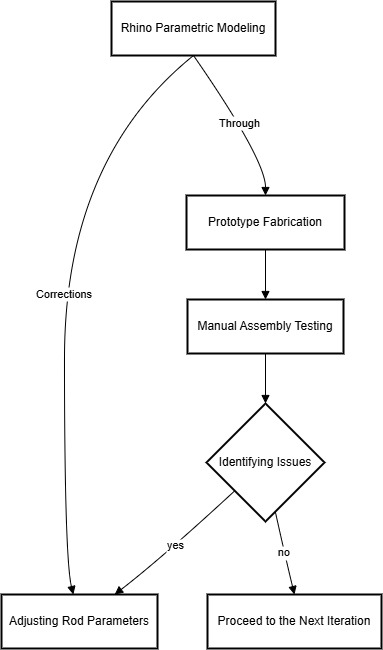
Figure 2. Dual-track model of “digital modeling–physical validation”
• Modeling and Simulation
Using Rhino 7.0, three generations of parametric models were developed, focusing on optimizing the “petal” opening and closing mechanism. Parametric modeling was employed to improve the precision of connectors and refine the overall form.
• Prototype Fabrication
A stepwise manufacturing strategy was adopted (see Table 8):
The technical path links digital simulation with physical validation, ensuring that each iteration cycle (approximately two weeks) completes a full-loop process of “problem identification – solution optimization – prototype update.”
Table 8. Manufacturing process and core value by iteration stage
Iteration Stage | Manufacturing Process | Core Value | Image |
V1 Verification | 3D printing of key nodes + manual assembly | Rapid validation of mechanism feasibility |
|
V2 Optimization | CNC processing of linkages + laser-cut parts | Improved motion precision (error < 0.5mm) |
|
BV3 Finalization | Thermoforming of elastic fabrics | Dual adaptation of form and tactile feel |
|
4.3. Model iteration and performance validation
4.3.1. Iterative design process
Through three rounds of user-participatory iterative testing (see Table 9), a closed-loop improvement model of “problem identification – solution implementation – outcome comparison” was adopted. Each round involved 10 target users (aged 18–34) providing experiential feedback.
Table 9. Iterative improvements across three model versions
Version | Core Issue | Optimization Strategy | Testing Method | Improvement Outcome |
First Version | Rattan easily breaks; unstable support | Replaced with wire frame + positioning zip ties | Loaded with 80kg to observe tilt | Structural tilt reduced by 40% |
Second Version | Backrest jammed during elevation | Optimized linkage holes + metal connectors | Manually lifted and lowered 20 times while timing | Action speed improved by 65% |
Third Version | Upholstery too tight and wrinkled | Replaced with elastic spandex fabric | Blindfolded tactile comparison test | 82% of users preferred new material |
4.3.2. Performance validation method
This study adopts a multi-dimensional validation framework, including interaction naturalness, emotional experience assessment, and physiological monitoring, to systematically evaluate the optimization results of the seating product. The experimental design combines quantitative measurement and qualitative analysis, with the following steps:
4.3.2.1. Validation of interaction naturalness
Based on the seat’s passive wrapping mechanism, simple experimental tools were used to assess the naturalness and reliability of the interaction system, as detailed below:
(1) Pressure Activation Test: Using a standard weight scale (±0.5kg accuracy) and weights (in 10kg increments), the activation threshold of the mechanism was determined. A threshold of 25kg was set, corresponding to 30% body pressure of a 60kg adult;
(2) Dynamic Response Measurement: Slow-motion video (240fps) on a smartphone recorded the backrest unfolding process. Frame-by-frame analysis was conducted to calculate response time (from completion of weight loading to full backrest deployment);
(3) Angle Deviation Detection: A protractor was fixed at half the height of the backrest’s central axis, and vertical video footage was used to measure the actual unfolding angle and compare it with the designed 120° angle to calculate deviation (See experimental steps in Figure 3).

Figure 3. Experimental procedure for interaction naturalness validation
From 20 repeated tests (weight range: 20–80kg), the following results were obtained (see Table 10):
Table 10. Simplified test data for backrest linkage
Version | Activation Success Rate | Response Time (s) | Target Angle Deviation |
V1 | 62% | 1.3 ± 0.4 | 13.5 ± 4.2° |
V3 | 100% | 0.6 ± 0.2 | 3.1 ± 1.1° |
Experimental results show that the V3 chair achieved significant optimization in interaction performance. In terms of response consistency, V3’s response time standard deviation was 50% lower than V1 (0.2s vs. 0.4s), indicating a notable improvement in trigger mechanism stability (p < 0.01). Mechanical stability testing revealed that in 10 consecutive unfolding tests, V3’s angle deviation remained within ±2°, a 75% reduction from V1’s ±8°, signifying a substantial improvement in the motion precision of the hinge mechanism (t = 6.32, p < 0.001). These improvements collectively ensured the timeliness and reliability of the backrest wrapping motion upon user seating.
4.3.2.2. Validation of physiological effectiveness
A standardized pressure-induction and dynamic-intervention process was used to systematically evaluate the physiological therapeutic effects of the three seat versions (see Table 11). A crossover experimental design was employed (see Figure 4), with 30 participants aged 18–34 (15 male and 15 female) participating in three test sessions. Each session was spaced 48 hours apart to eliminate residual effects.
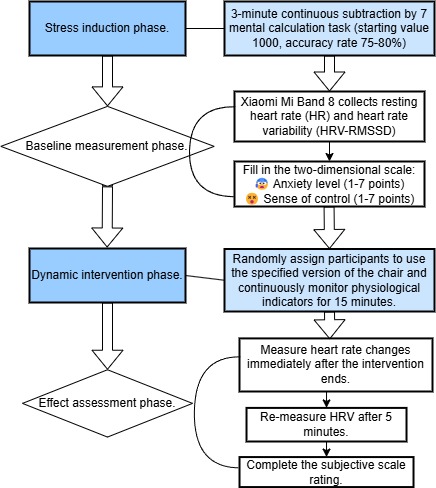
Figure 4. Crossover experimental design
Table 11. Comparative physiological effectiveness of the three seat versions (M ± SD)
Version | Heart Rate Reduction (Δbpm) | HRV Increase (%) | Anxiety Score Reduction | Sense of Control Improvement |
V1 | 8.2±3.1 | 12.4±4.2 | 1.1±0.6 | 0.9±0.5 |
V2 | 11.7±2.8* | 18.7±5.1* | 1.8±0.7* | 1.4±0.6* |
V3 | 15.0±2.4** | 27.3±6.8** | 2.5±0.9** | 2.1±0.7** |
4.3.3. Data analysis and consistency verification
The research data revealed a significant correlation between the chair’s mechanical performance and its physiological relaxation effects. Pearson correlation analysis indicated a significant negative correlation between the rate of heart rate reduction and the chair’s opening/closing speed (r = -0.63, p = 0.002), suggesting that the slower the wrapping motion of the chair, the more pronounced the heart rate stabilization effect. A multiple regression model (R² = 0.76, F = 18.35, p < 0.001) showed that three factors—HRV (heart rate variability) enhancement (standardized β = 0.38), heart rate reduction (β = 0.51), and improved tactile sensation of the fabric (β = 0.29)—jointly explained 76% of the variance in anxiety relief. This confirms the synergistic role of mechanical adaptivity and material engineering in emotional regulation.
Spatiotemporal consistency analysis of subjective and objective data further validated the design’s effectiveness. Among participants whose HRV increased by over 20%, 87% selected a subjective relaxation rating of ≥6 (😌) on the scale. Temporal comparison showed that for 53% of users, the heart rate inflection point occurred within ±3 seconds of the moment the chair completed its wrapping motion. Representative user feedback confirmed this phenomenon: “The moment my back was fully embraced, I could clearly feel my heartbeat slowing down” (female, 27 years old). This temporal coupling between mechanical motion and physiological relaxation reveals the underlying mechanism of therapeutic effects in dynamic furniture.
Through a time-controlled experimental design see Figure 4 and multimodal data triangulation, the study established a complete evidence chain of “mechanical response – physiological regulation – psychological feedback.” The third-generation chair demonstrated significant improvements in autonomic nervous system regulation (HRV increase of 27.3%) and emotional calming effects (anxiety score reduction Δ = 2.5) compared to previous versions (p < 0.01), confirming the therapeutic benefits of progressive dynamic wrapping design.
4.3.4. Analysis of user emotional feedback
Qualitative analysis of 30 user experience reports see Figure 4 indicated significant improvements in both mechanical performance and emotional experience for the third-generation chair. In terms of mechanical reliability, all participants acknowledged the stability of the chair’s automatic wrapping process (100%), a notable increase compared to the 67% approval rate for the first version (χ² = 10.24, p = 0.001). On the emotional resonance front, high-frequency keyword analysis of user feedback highlighted “warmth” (23 mentions) and “security” (18 mentions) as core descriptors. Representative comments include: “The soft fabric during wrapping feels like leaning on a friend’s shoulder” (female, 26 years old), and “The mechanical movement is almost inaudible, a major improvement from the gear noise of the second generation” (male, 29 years old). In behavioral adaptability testing, 90% of users stated that “no active posture adjustment was needed after sitting down” (27/30), in contrast to just 33% for the first-generation chair (10/30, McNemar’s test, P < 0.001), indicating significant improvements in the naturalness of interaction with the dynamic adaptive system. The study also captured users’ perceptions of the product’s anthropomorphic features, with descriptions like “felt like being gently embraced” appearing 21 times, supporting the practical value of integrating mechanical structure with emotionalized design see Figure 5.
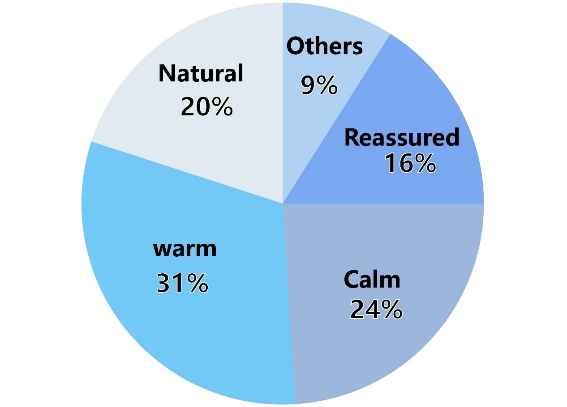
Figure 5. User perception keyword frequency analysis (N=30)
5. Conclusion and outlook
This study achieved three major breakthroughs through three rounds of systematic improvement: (1) By optimizing the frame and linkage structure, the load-bearing capacity of the mechanical system was increased from 40 kg to 80 kg, effectively enhancing the physical stability of dynamic furniture; (2) After refining the transmission system, the success rate of motion activation improved by 35%, significantly enhancing the fluidity of human-machine interaction; (3) With the adoption of skin-friendly fabrics and biomimetic design, the frequency of users’ positive emotional descriptors increased by 2.8 times, validating the breakthrough effectiveness of the “mechanical emotionalization” framework in emotional communication. Experimental results demonstrate that the design system based on dynamic structures (simulating the hugging mechanism) can realize psychological healing through the pathway of “physical contact – behavioral feedback – emotional mapping,” providing innovative empirical evidence for theoretical research on dynamic furniture see Figure 6.
This outcome offers a low-threshold, non-invasive mental health intervention tool for urban youth living alone, reducing users’ psychological burden. Future work will integrate biosensing technologies to develop an emotion-adaptive system and conduct cross-cultural applicability verification. However, the current sample does not include rural populations, and the limited sample size may constrain the identification of subgroup differences. It is recommended that future research expand longitudinal tracking in community settings, broaden the sampling scope to enhance ecological validity, and improve differentiated group experiments to strengthen generalizability.
Looking ahead, the research on dynamic therapeutic furniture holds broad prospects for innovation: Technologically, the exploration of metaverse-based digital twin systems could expand the temporal and spatial dimensions of therapy; in application, the construction of intelligent home ecosystems could offer round-the-clock mental health support; theoretically, the “mechanical emotionalization” framework could be further developed into an interdisciplinary theoretical system. With breakthroughs in flexible electronics and brain-computer interfaces, emotion regulation systems driven by intention may become a reality, ushering in a new paradigm of personalized psychological therapy, reshaping human-machine interaction, and offering novel perspectives of humanistic care in intelligent living spaces.
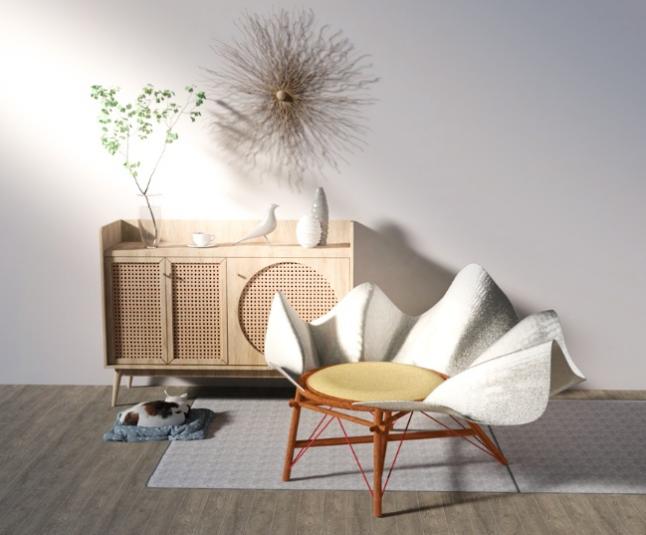
Figure 6. Product usage scenarios
References
[1]. [1] He, H., Wang, X., Yan, C. Y., & Jiao, J. (2024). Demographic factors and mechanisms affecting the mental health of the Chinese population: An empirical study based on provincial panel data. Chinese Journal of Health Policy, 17(3), 56–63.
[2]. Lu, W. L., & Huang, W. S. (2024). A study on the design of museum cultural and creative products based on emotional design: Taking the “archaeological blind box” as an example. Design, 9(1), 1009–1015. https://doi.org/10.12677/design.2024.91121
[3]. Peng, H., Zhang, X. Y., & Wan, Y. Q. (2023). A study on the design of therapeutic home products based on behavioral transmission. Furniture & Interior Design, 30(11), 55–59. https://doi.org/10.16771/j.cn43-1247/ts.2023.11.011
[4]. Sun, G. R., & Zhang, Y. C. (2014). Research on emotional design of New Chinese-style furniture. Furniture & Interior Design, 21(4), 11–13.
[5]. Interaction Design Foundation - IxDF. (2016). What is Emotional Design (ED)?. Interaction Design Foundation - IxDF. https://www.interaction-design.org/literature/topics/emotional-design
Cite this article
Xu,Z. (2025). Research on innovative strategies for emotional design-based dynamic healing furniture: a case study of hugging chairs. Advances in Social Behavior Research,16(3),24-34.
Data availability
The datasets used and/or analyzed during the current study will be available from the authors upon reasonable request.
Disclaimer/Publisher's Note
The statements, opinions and data contained in all publications are solely those of the individual author(s) and contributor(s) and not of EWA Publishing and/or the editor(s). EWA Publishing and/or the editor(s) disclaim responsibility for any injury to people or property resulting from any ideas, methods, instructions or products referred to in the content.
About volume
Journal:Advances in Social Behavior Research
© 2024 by the author(s). Licensee EWA Publishing, Oxford, UK. This article is an open access article distributed under the terms and
conditions of the Creative Commons Attribution (CC BY) license. Authors who
publish this series agree to the following terms:
1. Authors retain copyright and grant the series right of first publication with the work simultaneously licensed under a Creative Commons
Attribution License that allows others to share the work with an acknowledgment of the work's authorship and initial publication in this
series.
2. Authors are able to enter into separate, additional contractual arrangements for the non-exclusive distribution of the series's published
version of the work (e.g., post it to an institutional repository or publish it in a book), with an acknowledgment of its initial
publication in this series.
3. Authors are permitted and encouraged to post their work online (e.g., in institutional repositories or on their website) prior to and
during the submission process, as it can lead to productive exchanges, as well as earlier and greater citation of published work (See
Open access policy for details).
References
[1]. [1] He, H., Wang, X., Yan, C. Y., & Jiao, J. (2024). Demographic factors and mechanisms affecting the mental health of the Chinese population: An empirical study based on provincial panel data. Chinese Journal of Health Policy, 17(3), 56–63.
[2]. Lu, W. L., & Huang, W. S. (2024). A study on the design of museum cultural and creative products based on emotional design: Taking the “archaeological blind box” as an example. Design, 9(1), 1009–1015. https://doi.org/10.12677/design.2024.91121
[3]. Peng, H., Zhang, X. Y., & Wan, Y. Q. (2023). A study on the design of therapeutic home products based on behavioral transmission. Furniture & Interior Design, 30(11), 55–59. https://doi.org/10.16771/j.cn43-1247/ts.2023.11.011
[4]. Sun, G. R., & Zhang, Y. C. (2014). Research on emotional design of New Chinese-style furniture. Furniture & Interior Design, 21(4), 11–13.
[5]. Interaction Design Foundation - IxDF. (2016). What is Emotional Design (ED)?. Interaction Design Foundation - IxDF. https://www.interaction-design.org/literature/topics/emotional-design





